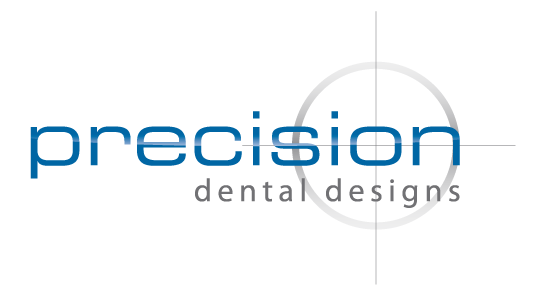ALL CERAMICS
Precision Dental's all ceramic restorations offer a level of durability built to withstand rugged Alaska, with exceptional esthetics and glacier-like translucency. Our all ceramic restorations are optimal for veneers, crowns and bridges, inlays and onlays.
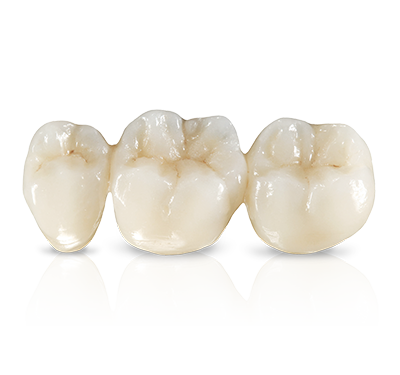
Precision Dental Designs fabricates the highest-quality monolithic restorations. Fabricated using incredibly strong Prettau® Zirconia, these full-contour zirconia restorations are kind to opposing dentition and perfect for various indications. Prettau® Zirconia yields exceptional stability and fracture toughness, so whether it’s an implant case or crown, the translucent Alaska Strong FCZ will suit the indication perfectly.
Full-contour zirconia is so versatile, it can be used in almost any situation from singles, bridges with any combination of abutments and pontics, inlay bridges, Maryland type bridges and screw retained implants. Also an esthetic alternative to a PFM with metal occlusion due to limited space.
Contraindications Include:
When esthetic expectations are high and it is important that the restorations match surrounding natural dentition or other existing restorations
If bonding is necessary to retain the restoration, bond strength is weaker and less predictable than other ceramics
D2740 Crown – Porcelain/Ceramic Substrate
D6245 Pontic Porcelain/Ceramic
D6740 Abutment Crown Porcelain/Ceramic
Shoulder preparation not needed. A mild champfer or a feather edge margin is good. 1mm buccal, lingual and occlusal reduction is ideal, but can go to .5mm in some areas, when reduction is limited.
Minimum occlusal reduction of 0.5 mm; 1 mm is ideal.
Adjustments and polishing: Adjust Full-contour zirconia crowns and bridges using water and air spray to keep the restoration cool and to avoid micro-fractures with a fine grit diamond. If using air only, use the lightest touch possible when making adjustments. A football-shaped bur is the most effective for occlusal and lingual surfaces (on anterior teeth); a tapered bur is the ideal choice for buccal and lingual surfaces.
Polish Full-contour zirconia restorations with the porcelain polishing system of your choice.
Full-contour zirconia may be cemented using a resin reinforced glass ionomer such as Relyx Luting cement. When a greater bond is needed do to the lack of a retentive preparation, use resin cement like Relyx Unicam or Relyx Ultimate.
Before cementing all Full-contour zirconia crowns, the interior surface of the crown needs to be cleaned with Ivoclean (Ivoclar Vivadent; Amherst N.Y.). This is critical in assuring maximum bond strength.
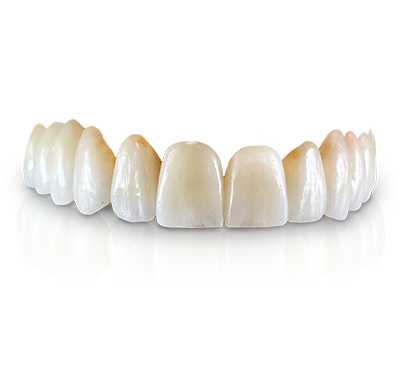
Precision’s porcelain fused to zirconia restorations are CAD/CAM fabricated with a beautiful glass-type ceramic. The strong zirconia base is complemented by ICE Ceramic porcelain that exhibits superior translucency. When using Precision PFZs, the margins do not have to be veneered, and the fit will be exact. Precision's Glacier Translucent Zirconia is indicated for single and multi-unit bridges, up to three units.
Full-contour zirconia is so versatile, it can be used in almost any situation from singles, bridges with any combination of abutments and pontics, inlay bridges, Maryland type bridges and screw retained implants. Also an esthetic alternative to a PFM with metal occlusion due to limited space.
Contraindications Include:
When esthetic expectations are high and it is important that the restorations match surrounding natural dentition or other existing restorations
If bonding is necessary to retain the restoration, bond strength is weaker and less predictable than other ceramics
D2740 Crown – Porcelain/Ceramic Substrate
D6245 Pontic Porcelain/Ceramic
D6740 Abutment Crown Porcelain/Ceramic
Shoulder preparation not needed. A mild champfer or a feather edge margin is good. 1mm buccal, lingual and occlusal reduction is ideal, but can go to .5mm in some areas, when reduction is limited.
Minimum occlusal reduction of 0.5 mm; 1 mm is ideal.
Adjustments and polishing: Adjust Full-contour zirconia crowns and bridges using water and air spray to keep the restoration cool and to avoid micro-fractures with a fine grit diamond. If using air only, use the lightest touch possible when making adjustments. A football-shaped bur is the most effective for occlusal and lingual surfaces (on anterior teeth); a tapered bur is the ideal choice for buccal and lingual surfaces.
Polish Full-contour zirconia restorations with the porcelain polishing system of your choice.
Full-contour zirconia may be cemented using a resin reinforced glass ionomer such as Relyx Luting cement. When a greater bond is needed do to the lack of a retentive preparation, use resin cement like Relyx Unicam or Relyx Ultimate.
Before cementing all Full-contour zirconia crowns, the interior surface of the crown needs to be cleaned with Ivoclean (Ivoclar Vivadent; Amherst N.Y.). This is critical in assuring maximum bond strength.
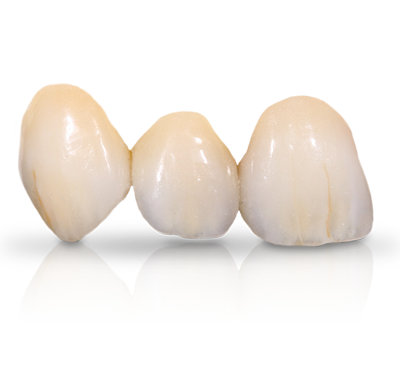
Flexibility. Simplicity. These are just a couple of the attributes of the IPS e.max® all-ceramic family. IPS e.max offers metal-free esthetics and incredible strength for the PRESS and CAD/CAM techniques.You can choose from e.max Press and ZirPress, e.max CAD and e.max ZirCAD, giving you great balance and opportunity no matter which technique you choose. Consistent shade results and a reliable layering scheme make this the ideal choice for dentists and their patients. You can give them the customized and authentic-looking restorations they’ve been looking for.
IPS e.max press is indicated for full anterior or posterior crowns, veneers, inlays and onlays.
Bridges which include molars, Maryland style bridges and bridges which have a short vertical height that does not allow for adequate connector height.
D2740 Crown
D2610 Inlay for 1 surface
D2620 Inlay for 2 surfaces
D2630 Inlay for 3 surfaces
D2962 Labial Veneer
D2783 Crown 3/4 Porcelain Ceramic (does not include veneers)
Anterior full-coverage crowns require a chamfer or shoulder margin. A circular shoulder is prepared with rounded inner edges or a chamfer at an angle of 10-30°: the width of the shoulder/chamfer is approx. 1 mm. Facial reduction is 1.5 – 2 mm; 1 – 1.5 mm lingual contact clearance. Incisal reduction is 1.5 – 2 mm with rounded internal line angles, and an incisal edge at least 1mm wide to permit optimum milling of the incisal edge during CAD/CAM processing.
Posterior full-coverage crown requires a chamfer or shoulder margin. A circular shoulder is prepared with rounded inner edges or a chamfer at an angle of 10-30°: the width of the shoulder/chamfer is approx. 1 mm. Occlusal reduction is 1.5 – 2 mm: axial reduction (buccal, lingual and interproximal) is 1.5 mm with rounded internal line angles.
IPS e.max layered – can be either cemented using a resin reinforced glass ionimer such as Relyx Luting cement. Or bonded using a resin cement, when extra strength is needed due to lack of retention on the prep, use a resin cement such as Relyx Unicem or Relyx Ultimate.
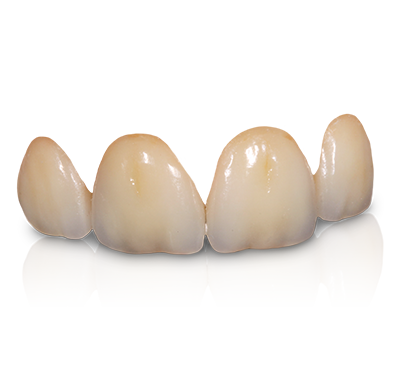
Give your patients the level of esthetics they’ve been seeking with the IPS Empress®. A truly diverse, pressed all-ceramic restorative product, which can be used for veneers, crowns, inlays and onlays.
IPS Empress is recommended for anterior single crowns, inlays, onlays and veneers. IPS Empress veneer is recommended for anterior restorations to block out mild staining, close diastemas or to just enhance esthetics.
IPS Empress should not be used on patients with malfunctional occlusion such as bruxers or clenchers. IPS Empress should not be used as abutments for cast partials. IPS Empress should not be used in situations when preparation requirements cannot be achieved. IPS Empress veneer is not to be used in the case of correcting severe stain situations such as tetracycline.
D2740 Crown
D2610 Inlay for 1 surface
D2620 Inlay for 2 surfaces
D2630 Inlay for 3 surfaces
D2962 Labial Veneer
D2783 Crown 3/4 Porcelain Ceramic (does not include veneers)
IPS Empress should not be used on patients with malfunctional occlusion such as bruxers or clenchers. IPS Empress should not be used as abutments for cast partials. IPS Empress® should not be used in situations when preparation requirements cannot be achieved. IPS Empress® veneer is not to be used in the case of correcting severe stain situations such as tetracycline.
Anterior full-coverage crowns require a chamfer with 1.5 – 2 mm facial reduction, 1 – 1.5 mm lingual contact clearance, 1.5 – 2 mm incisal reduction 1 – 1.5 mm reduction at the gingival margin with rounded internal line angles; or a shoulder with 1 mm lingual reduction, 2 mm incisal reduction, 1.5 mm labial reduction, 1 mm 360° rounded shoulder.
Posterior full-coverage crowns require a chamfer margin with 1.5 – 2 mm occlusal reduction, 1.5 mm buccal and lingual reduction with rounded internal line angles; or a shoulder with 1.5 – 2 mm occlusal reduction, 1.5 mm buccal and lingual reduction and 1 – 1.5 mm gingival margin reduction with rounded internal line angles.
Inlays and onlays require 1.5 – 2 mm isthmus width, 1 – 1.5 mm wide gingival floor with rounded internal line angles and butt joint margins.
Veneers require a uniform preparation and lingual reduction to increase strength. A medium-grit round-ended diamond is used to join the depth cut grooves to establish a uniform preparation and porcelain thickness of at least 1 mm. The diamond is angled to eliminate undercuts and establish a butt joint on the lingual aspect of the preparation. The incisal edge should be rounded to eliminate sharp line angles.
Chamfer Margins – Correct preparation of the chamfer margins interproximally allows the appropriate bulk of porcelain.
A Slice Preparation – This technique enables the ceramist to close the space and avoid unnatural lingual contours.
Adhesive bonding/dual cure materials including:
Variolink (Ivoclar Vivadent)
Choice (Bisco, Inc.)
Insure (Cosmedent, Inc.)
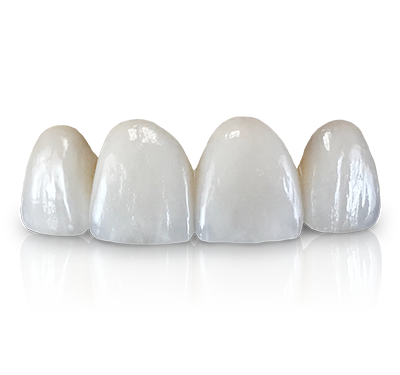
Using only the highest quality materials, we can create stunning PFZ restorations with high flexural strength and lifelike esthetics suitable for even the most discerning patient.
A CAD/CAM substitute for traditional PFM our porcelain fused to zirconia can be used for anterior and posterior crowns, crowns over implants and bridges of up to fourteen unit
Attachment cases
Cases with less than 1 mm clearance
Bruxism
Patients who have broken a PFM crown
Cases that require bonding
D2740 Crown - porcelain / ceramic substrate
The ideal preparation for PFZs is a chamfer margin preparation. If a porcelain labial margin is prescribed, then a shoulder margin preparation is required.
Feather-edge margin preparations are indicated for full-cast restorations.
Resin Ionomer cement (RelyX or RelyX Unicem, 3M ESPE)
Maxcem Elite (Kerr)
Panavia F 2.0 (Kuraray) -ideal for short, tapered preparations
Glass ionomer cement (GC Fuji, GC America)
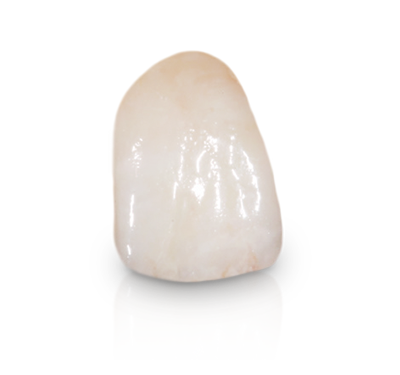
The most esthetic option for pressed ceramic restorations, GC Press is a revolutionary high-strength lithium disilicate. GC Press retains stability and does not drop in value, even after several firings. The physical properties of GC Press result in cleaner presses, wear resistance and color stability for your patient.
Our GC Press can be used for veneers, inlays, onlays and crowns
Our GC Press is not suitable for patients with severely reduced residual dentition, patients with severely reduced occlusal vertical dimension or parafunctions, such as patients suffering from bruxism.
D2740 Crown
D2610 Inlay for 1 surface
D2620 Inlay for 2 surfaces
D2630 Inlay for 3 surfaces
D2962 Labial Veneer
D2783 Crown 3/4 Porcelain Ceramic (does not include veneers)
View and download the full GC Press prep guide here.
1. Preparations Etching protocol
- Apply hydrofluoric acid gel (5-9%) for 20 seconds to the inner surfaces of the restoration.
- Wash with water spray or an ultrasonic cleaner and dry.
- Condition the etched surfaces with a silane coupling agent such as CERAMIC PRIMER II or G-Multi PRIMER and allow it to dry.
Note:
・Prior to using CERAMIC PRIMER II, G-Multi PRIMER, G-CEM LinkForce or G-CEM LinkAce, refer to the respective instructions for use.
・In case the preparation is non-retentive, an adhesive resin cement (such as G-CEM LinkForce) is preferred.
・ Hydrofluoric acid is for extraoral use only and must not be applied in the oral cavity.
・ Phosphoric acid (35-37%) can be also used for the purpose of cleaning the surface, preferably scrubbing with a microbrush for 10-15 seconds.
